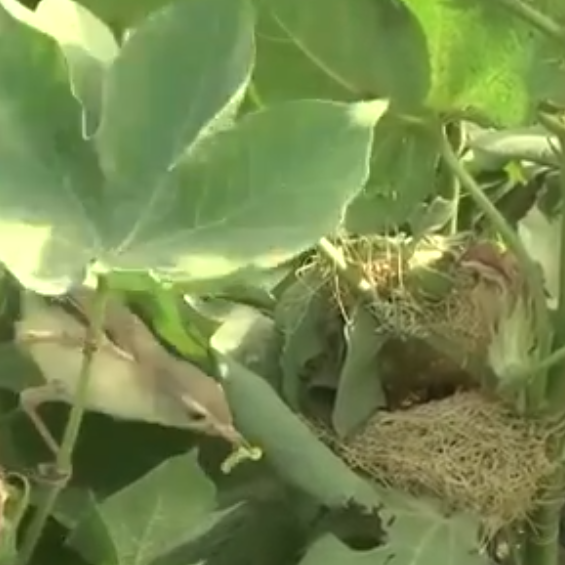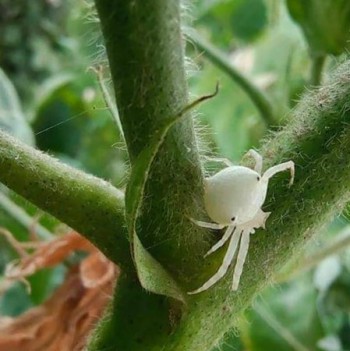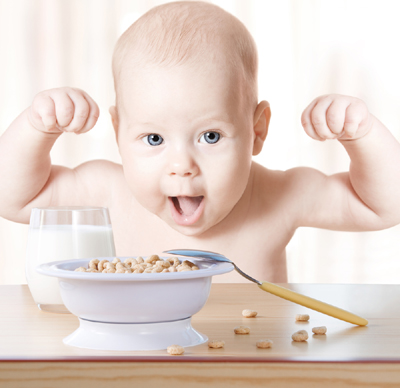Main Characteristics of Conventional, Organic and Integrated Farming Systems
Integrated farming focuses on quantity of production like a conventional model and quality like organic one. It mixes cultural, biological, biopesticides practices from organic farming while using chemicals when highly required. The foods prepared with integrated farming are better than traditional ones, yet organic foods are the best.
The increasing population, COVID-19 setback, and depleting resources have raised food security concerns worldwide. With the existing trends, we may become 9.3 billion by the end of this century, and demand for quality and quantity shall continue rising. How can we meet this unprecedented demand? Can our agriculture systems meet this challenge? What types of farming systems can help us get sufficient quantity and good quality foods simultaneously?
When we look at the farming world, we find three broad systems; conventional, organic, and Integrated farming.
The first line of defense against crop pests and diseases is chemicals. Conventional farming mainly relies upon excessive synthetic inputs like GMO seeds, synthetic fertilizer, pesticides, growth regulators, and excessive water use for irrigation. About 98.5 % of world food is produced by following this pattern of crop production. This system goes for higher production while ignoring the impacts of synthetic chemicals on soil, water, and air to destroy biodiversity and the ecosystem. Without any significant disagreement, this system has deteriorated the quality of life and made humans subject to various health issues. The pests and viruses are mutating fast to defeat our efforts.
Organic farming is a serious attempt to grow quality food with natural methods to manage pest pressure and diseases of different crops and livestock. This system improves the ecosystem, reduces chemical pollutions, and helps humans live longer with quality food. Some years back, it was just a pipe dream. Now, organic products have become a mainstream economic activity with a 300% increase in sales during the COVID crises. However, organic farming is giving 34% less yield per hector than conventional farming. Furthermore, the input costs for organic farming are getting higher, making the produce 15% to 20% costlier to the end-users.
Integrated farming involves a management tool called "Integrated Pest Management." It is a combination of both organic and conventional pest management techniques. It involves a scientifically developed system to use cultural, biological, botanical, mechanical, semi-chemicals, and all other available methods to manage a pest or disease before going for synthetic chemicals. In simple words, synthetic insecticides can only be used when all other ways to control pests have been implemented but failed. It also involves a stepwise process called Integrated Nutrient Management (INM) to reduce chemicals being used as fertilizers.
Ideally, there is no alternative for organic foods. However, the public and private managers can improve the quantity and quality of edible agricultural products by minimizing the application of chemicals with the help of IPM. The food and environment shall be less polluted with chemicals if implemented successfully.
Integrated Pest Management (IPM)

This approach involves judicious use of natural (botanicals/biopesticides) and synthetic (inorganic) pesticides to manage insects economically to achieve desired crop yield. The first line of defense is a substantial population of predators of harmful insects like Chrysoperla, Trichogramma, Assassin bug, spiders, beetles, dragonflies, wasps, birds, etc. The whole model makes all-out efforts to save this line of defense. Any application of synthetic insecticide may have the potential to break this defense line. When chemicals become necessary, the application is followed up with various methods to support this defense line.
Some primary IPM techniques are given here:
Preventive methods for Integrated Farming
These are the techniques that minimize the entrance of pest/disease from outside into the farmer's field. Following are some critical preventive methods
§ Choice of resistance variety
§ Selection of good quality pure seed
§ Seed treatment before sowing
§ Cleaning of watercourses
§ Cleaning of alternate host plant/weeds around the field
Cultural Methods for Integrated Farming
These methods are not aimed directly at managing pests, but they make the farming environment supportive to the predators and unsafe to the harmful insects.
§ Scientifically determined sowing time
§ Sowing methods/ sowing position
§ Maintaining row to row and plant to plant spacing for proper aeration of crop
§ Judicious use of fertilizer for healthier plant growth
§ Careful use of irrigation water and method of application
Direct Control Methods for Integrated Farming

This methods involves the methods directly on a crop.
§ Use of predators like Chrysoperla, Trichogramma, Assassin bug, spiders, beetles, dragonflies, wasps, birds, etc.
§ Beneficiary microorganism
§ Weeding/earthing up with manual implements for control of weeds.
§ Use of sex pheromone traps/ light traps/sticky cards
§ Use of plant based extracts (biopesticides)
Finally, the use of synthetic insecticides when no other option is left
Integrated Nutrient Management (INM) as a part of Integrated Farming
This approach involves judicious use of natural (organic) and synthetic (inorganic) resources to meet crop plants' nutrient requirements to achieve desired crop yield. The primary purpose is to maintain a substantial population of supportive microorganisms to help crops growing with the least amount of synthetic fertilizers. It includes:
§ Incorporation of crop residues back into the soil rather than burning it
§ Addition of organic matter / organic waste
§ Green manuring
§ Use of microbes/ biofertilizers
§ Minimum tillage operations/ conservation tillage
§ Crop rotation
§ Judicious irrigation
§ Finally, minimum use of synthetic fertilizers
| Parameters | Farming Systems | |||
|---|---|---|---|---|
| Conventional | Organic | Integrated | ||
| 1 | Ecosystem Stability | No | Yes | Yes |
| 2 | Food need fulfillment | 98% | 1-2% | It can easily replace Conventional one |
| 3 | Quality of produce | Low | Superior | High |
| 4 | Residual effects | Yes | Very low | Low |
| 5 | Pros | - High Productivity - High Pest Control - Early Response |
- Superior Quality - Environment Friendly - Sustainable |
- High productivity - Better Quality - Sustainable - Economic |
| 6 | Cons | - Worst for environment - Hazardous for humans, livestock and other fauna - Costlier - Uncertain - Unsustainable |
- Less production - Non-availability of inputs - Laborious - Needs more research - Policymakers hesitating |
- Fluctuation in quality - Marketing issues - Follows demand patterns |
| 7 | Seed material | GMOs, Hybrids are used | GMOs not allowed | Local varieties and GMOS |
| 8 | Seedbed preparation | With heavy machinery | Zero or Minimum soil disturbance |
Yes, with shallow depth & Sometimes with heavy machinery |
| 9 | Tillage operations | Heavy tillage operations | Minimum tillage operations | Conservative tillage operations |
| 10 | Nutrient Management | Synthetic fertilizers & growth regulators are frequent |
Organic nutrients | - A mixture of organic and natural nutrients, -Synthetic when no other Option |
| 11 | Irrigation Management | - Heavy watering - Artificial water can be used |
Water is conserved with mulching |
Both natural & artificial methods are used |
| 12 | Pest Management | Synthetic chemicals | Friendly insects, microorganisms, and plant based extracts |
Integrated Pest Management (IPM) |
At present conventional farming is the major stakeholder of the agriculture production system. It has serious environmental and health consequences, but its adoption is massive for the food security situation. However, it can gradually be shifted towards organic farming through integrated farming practices. It is time-consuming, yet scientists should design models that help farmers get the best yield with the least intervention of synthetic chemicals. Policymakers and public managers should implements such models skillfully by keeping in view positive and negative externalities.
- Home
- IPM
Express Your Opinion
We find value in differences between learning, interpreting and overall opinions. Please share your thoughts freely about this topic, but always remain respectful. You can preview and edit on the next page before your submission is sent in. You will also be informed about this site's privacy policies. Thank you for your contribution.
References:
Lançon, J., Wery, J., Rapidel, B., Angokaye, M., Gérardeaux, E., Gaborel, C., ... & Fadegnon, B. (2007). An improved methodology for integrated crop management systems. Agronomy for Sustainable development, 27(2), 101-110.
Matheyambath, A. C., Padmanabhan, P., & Paliyath, G. (2016). Encyclopedia of food and health.
Muller, A.; Schader, C.; Scialabba, N.E.-H.; Brüggemann, J.; Isensee, A.; Erb, K.; Smith, P.; Klocke, P.; Leiber, F.; Stolze, M.; et al. Strategies for feeding the world more sustainably with organic agriculture. Nat. Commun. 2017, 8, 1290.
Seufert, V.; Ramankutty, N.; Foley, J.A. Comparing the yields of organic and conventional agriculture. Nature 2012, 485, 229–234.
Tal, A. (2018). Making conventional agriculture environmentally friendly: moving beyond the glorification of organic agriculture and the demonization of conventional agriculture. Sustainability, 10(4), 1078.
Willer, H., & Lernoud, J. (2017). Organic agriculture worldwide 2017: current statistics. Research institute of organic agriculture (FiBL), Frick, Switzerland.
What are iron fortified foods?
What's New?
-
What are iron fortified foods?
Iron fortified foods contain additional iron to help prevent deficiencies and support overall health, particularly in children and pregnant women. -
What are fortified foods?
What are fortified foods? How are they different from staple and common everyday foods? -
Baby Organic Food: “To be, or not to be, that is the question”
Baby organic food is free from insecticides, weedicides and residues of synthetic fertilizers thus much safer for babies

DOWNLOAD!



